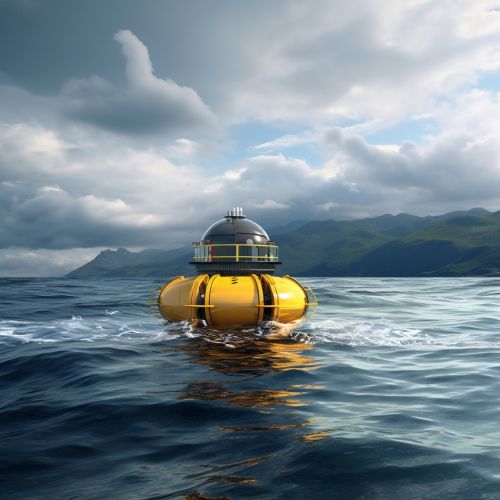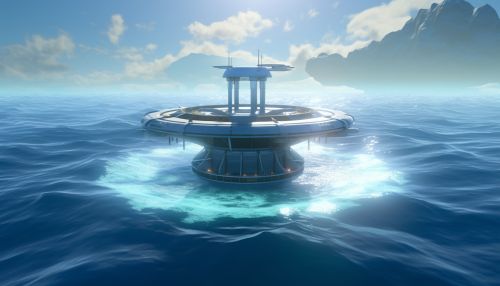Wave Energy Conversion
Introduction
Wave energy conversion involves the use of wave power to generate electricity. This is achieved through the use of wave energy converters (WECs), which are devices designed to capture the energy transported by ocean waves and convert it into a usable form of power. The process of wave energy conversion is a significant aspect of renewable energy technology, and it is one of the many ways in which countries around the world are attempting to reduce their reliance on fossil fuels.


Wave Energy
Wave energy is a form of renewable energy that is derived from ocean waves. It is a type of marine energy, which also includes tidal and thermal energy. Waves are generated by the wind as it blows across the sea surface, transferring some of its energy to the water. This energy is then transported in the form of waves, which can travel vast distances across the oceans.
Wave Energy Converters
Wave energy converters are devices that are designed to capture the energy from ocean waves and convert it into electricity. There are several different types of WECs, each with their own unique design and method of capturing wave energy. These include point absorbers, oscillating water columns, overtopping devices, and submerged pressure differential devices.
Point Absorbers
Point absorbers are a type of WEC that float on the surface of the water and absorb energy from the waves in all directions. They use the vertical motion of the waves to drive a piston or buoy that is connected to a generator.
Oscillating Water Columns
Oscillating water columns (OWCs) are a type of WEC that use the oscillating motion of the seawater within a partially submerged, hollow structure to drive an air turbine. As waves enter the base of the structure, they cause the water column inside to rise and fall, which in turn compresses and decompresses the air above it. This oscillating air flow is used to drive a turbine, which generates electricity.
Overtopping Devices
Overtopping devices are a type of WEC that use a reservoir to capture the wave energy. Waves overtop a barrier and fill up a reservoir, and the water is then released back into the sea through a turbine, generating electricity.
Submerged Pressure Differential Devices
Submerged pressure differential devices are a type of WEC that are located beneath the sea surface. They use the pressure differences below the wave trough and crest to generate power.
Wave Energy Conversion Process
The process of wave energy conversion involves several steps. First, the wave energy converter captures the energy from the ocean waves. This energy is then converted into mechanical energy through the movement of the device, which is often connected to a generator. The generator then converts this mechanical energy into electrical energy, which can be transmitted to the power grid.
Advantages and Disadvantages of Wave Energy Conversion
Like all forms of renewable energy, wave energy conversion has both advantages and disadvantages.
Advantages
One of the main advantages of wave energy is that it is a renewable source of power. This means that it is not depleted when used, unlike fossil fuels. Additionally, wave energy does not produce any harmful emissions or waste products, making it a clean source of energy.
Another advantage of wave energy is that it is predictable. The size and frequency of waves can be forecasted with a high degree of accuracy, making it a reliable source of power.
Disadvantages
One of the main disadvantages of wave energy is the cost. The technology required to capture and convert wave energy is expensive to install and maintain. Additionally, the energy output from wave energy converters is relatively low compared to other forms of renewable energy.
Another disadvantage is the potential impact on marine life. The installation and operation of wave energy converters can disrupt marine ecosystems and potentially harm marine life.
Future of Wave Energy Conversion
The future of wave energy conversion looks promising, with ongoing research and development aimed at improving the efficiency and reducing the costs of wave energy converters. As the world continues to move towards renewable sources of energy, wave energy conversion is likely to play an increasingly important role in the global energy mix.
